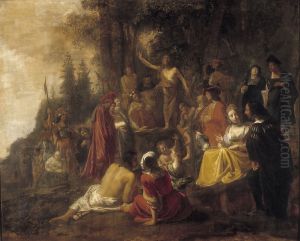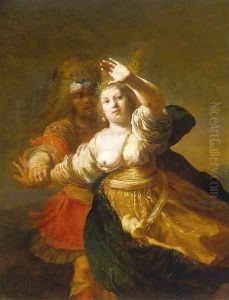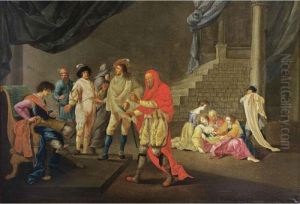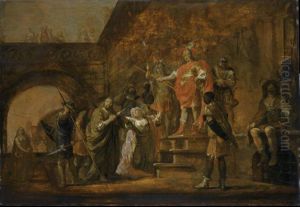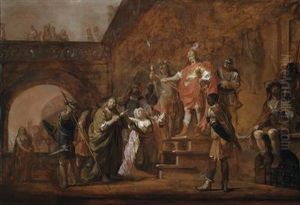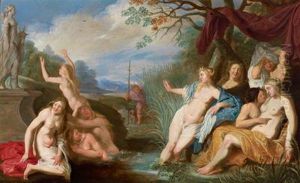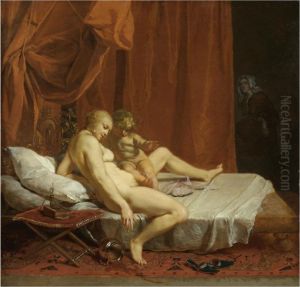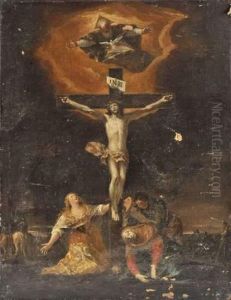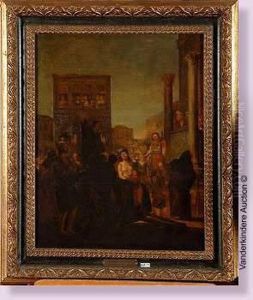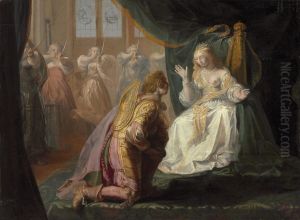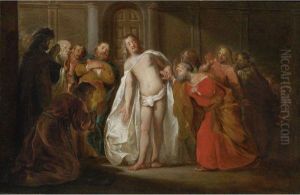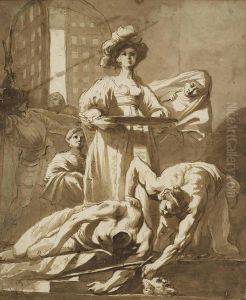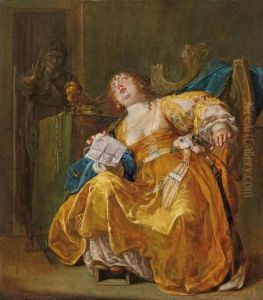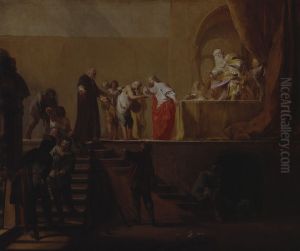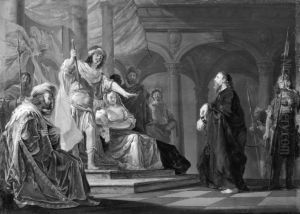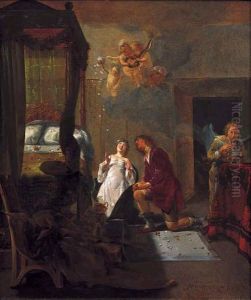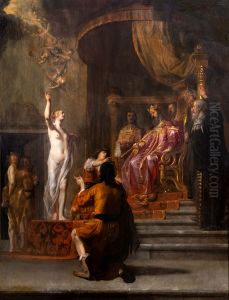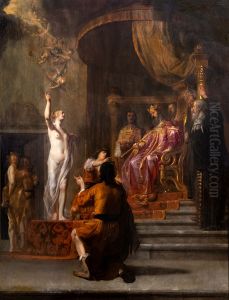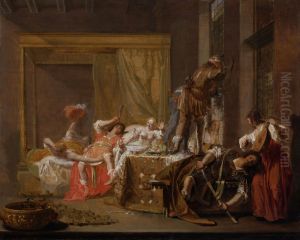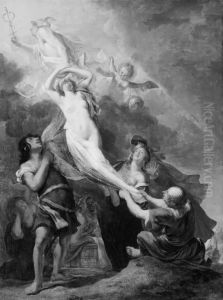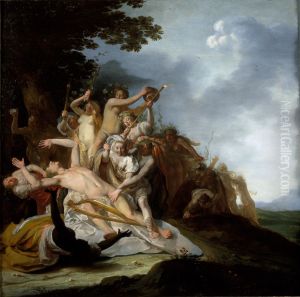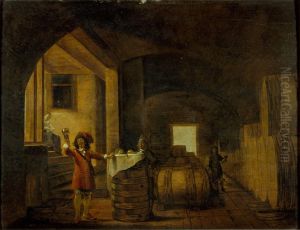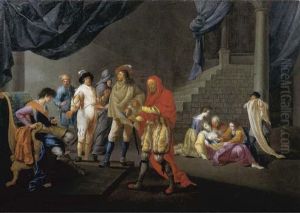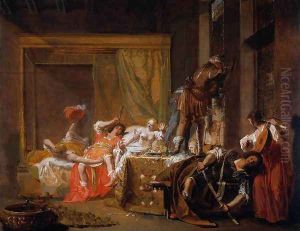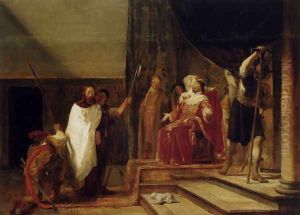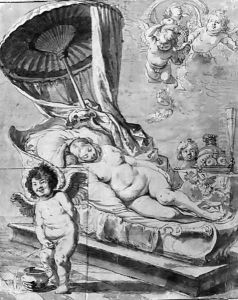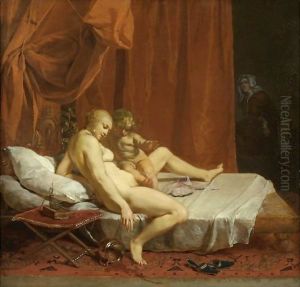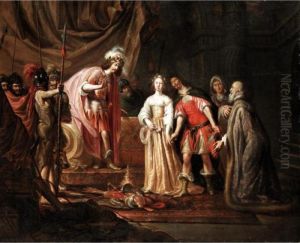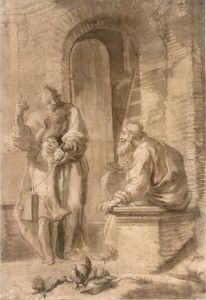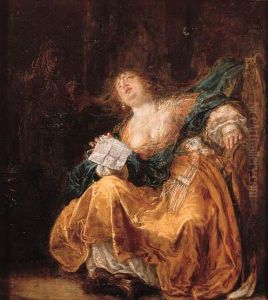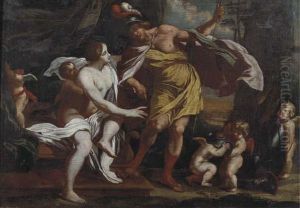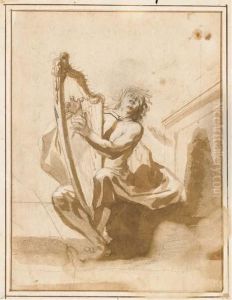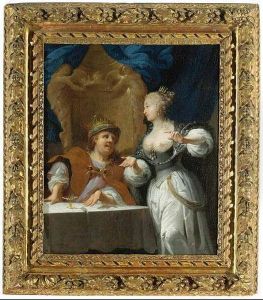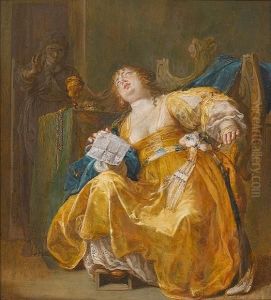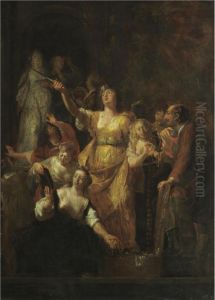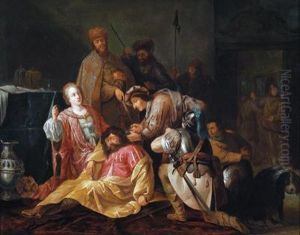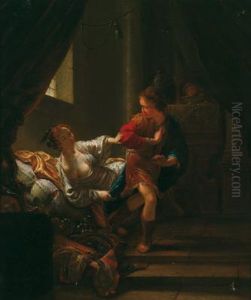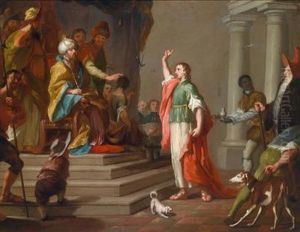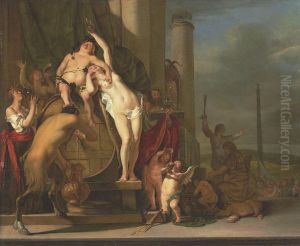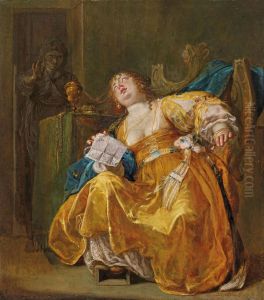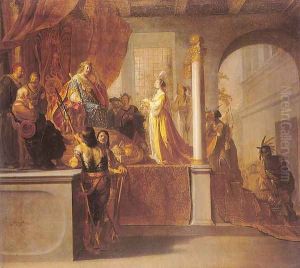Nikolaus Knupfer Paintings
Nikolaus Knupfer was a German artist who specialized in small domestic and history paintings. Born in Leipzig in 1603, Knupfer moved to Utrecht, where he became a significant figure in the Dutch Golden Age painting movement. His work is characterized by its detailed and intricate compositions, often focusing on moralistic and allegorical subjects.
In Utrecht, Knupfer became a pupil of Abraham Bloemaert, who was one of the foremost artists in the city at the time. This apprenticeship had a significant influence on Knupfer's development as an artist. Bloemaert's style, which combined elements of Mannerism with the emerging Baroque sensibility, can be seen in Knupfer's own work. However, Knupfer developed his own distinctive style, showing a preference for intimate scenes filled with rich color and light.
Knupfer's paintings usually depict scenes from the Bible, mythology, and history, as well as genre scenes of everyday life. His figures are often portrayed in lively postures and with expressive faces, which adds a dynamic quality to his work. He had a talent for storytelling through his art, which made his paintings popular among the wealthy citizens of Utrecht, who were his main patrons.
Although he was based in Utrecht, Knupfer's influence extended beyond the city. His pupils included Jan Steen and Matthias Stom, who both went on to become prominent artists in their own right. Through these pupils, Knupfer's techniques and themes were disseminated to a wider audience.
Despite his success during his lifetime, Knupfer did not leave a large body of work, and today he is not as well-known as some of his contemporaries. Nevertheless, his contributions to the Dutch Golden Age of painting are considered significant, particularly in the field of small-scale history painting.
Nikolaus Knupfer passed away in Utrecht in 1655. His works can be found in various museums and collections around the world, where they continue to be studied and appreciated for their artistic merit and historical value.
